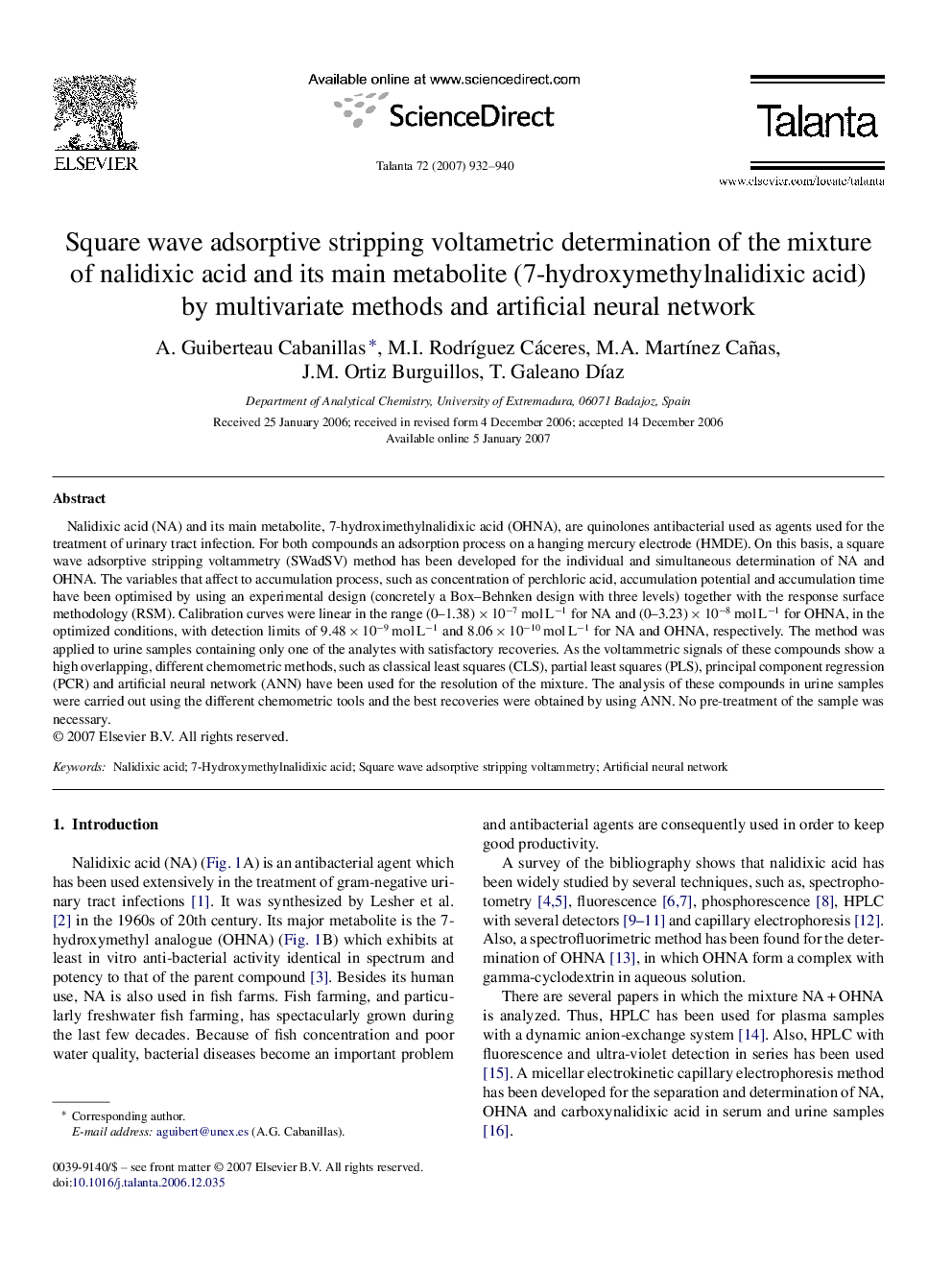| Article ID | Journal | Published Year | Pages | File Type |
|---|---|---|---|---|
| 1244980 | Talanta | 2007 | 9 Pages |
Nalidixic acid (NA) and its main metabolite, 7-hydroximethylnalidixic acid (OHNA), are quinolones antibacterial used as agents used for the treatment of urinary tract infection. For both compounds an adsorption process on a hanging mercury electrode (HMDE). On this basis, a square wave adsorptive stripping voltammetry (SWadSV) method has been developed for the individual and simultaneous determination of NA and OHNA. The variables that affect to accumulation process, such as concentration of perchloric acid, accumulation potential and accumulation time have been optimised by using an experimental design (concretely a Box–Behnken design with three levels) together with the response surface methodology (RSM). Calibration curves were linear in the range (0–1.38) × 10−7 mol L−1 for NA and (0–3.23) × 10−8 mol L−1 for OHNA, in the optimized conditions, with detection limits of 9.48 × 10−9 mol L−1 and 8.06 × 10−10 mol L−1 for NA and OHNA, respectively. The method was applied to urine samples containing only one of the analytes with satisfactory recoveries. As the voltammetric signals of these compounds show a high overlapping, different chemometric methods, such as classical least squares (CLS), partial least squares (PLS), principal component regression (PCR) and artificial neural network (ANN) have been used for the resolution of the mixture. The analysis of these compounds in urine samples were carried out using the different chemometric tools and the best recoveries were obtained by using ANN. No pre-treatment of the sample was necessary.
